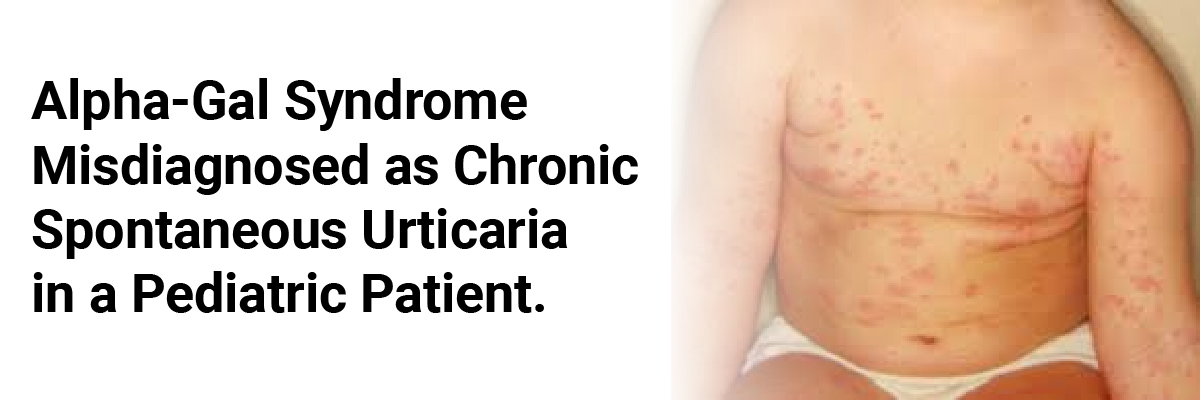
 IJCP Editorial Team
IJCP Editorial Team
Alpha-gal syndrome misdiagnosed as chronic spontaneous urticaria in a pediatric patient.
A report describes a case of a patient who started to develop wheals every couple of weeks at the age of 5. After two years of evolution, a first diagnostic workup was unable to identify a clear trigger of the hives. Skin prick testing for inhalation allergens was negative for different pollen, house dust mites, mold, and animal dander. Laboratory investigations revealed total IgE levels (22 IU/mL) and tryptase (4.7 ng/mL) to be within normal ranges, adequate thyroid function, no anti-thyroid peroxidase (TPO) antibodies, and no signs of infection with parasites or Helicobacter pylori. The patient received discharged with the working hypothesis of chronic spontaneous urticaria and received antihistamines as symptomatic treatment.
Six months later, the boy again presented with generalized urticaria, edema, dyspnoea, and vomiting. He received an epinephrine injector that resolved the symptoms. His lab investigations showed elevated Tryptase levels. Several hours before these symptoms, earlier that same day, he reported eating three Cervelat sausages (typical Swiss sausages containing beef and pork meat) as well as jelly beans containing gelatine, which had already shown some wheals before going to bed and then other symptoms developed in the middle of the night, suggesting a delayed allergic reaction to meat. The mother also reported that the patient had suffered several tick bites before and that the only meat he eats regularly is the Cervelat sausage. His specific IgEs for alpha-gal were elevated with 21.2 kUA/L, levels for gelatin (bovine) were < 0.1kU/L, whereas tryptase levels had normalized after the reaction (6 ng/mL), confirming the suspicion of a delayed-appearing IgE-mediated allergic reaction to meat. He received emergency medicine, advice for avoiding red meat and other gelatine-containing foods, and a treatment plan.
The avoidance diet caused the resolution of all symptoms, including wheals, together with the laboratory results, which reconfirmed the diagnosis of alpha-gal syndrome. Over the last three years, the family reported two accidents, one after eating a red meat-containing sausage at a barbecue (BBQ) and one after ingesting marshmallows. Both accidents happened at school, and the patient only presented with hives.
Enders FB, Elkuch M, Wörner A, et al. Alpha-gal syndrome initially misdiagnosed as chronic spontaneous urticaria in a pediatric patient: a case report and review of the literature. J Med Case Reports.2023; 17. https://doi.org/10.1186/s13256-022-03718-8

IJCP Editorial Team
Comprising seasoned professionals and experts from the medical field, the IJCP editorial team is dedicated to delivering timely and accurate content and thriving to provide attention-grabbing information for the readers. What sets them apart are their diverse expertise, spanning academia, research, and clinical practice, and their dedication to upholding the highest standards of quality and integrity. With a wealth of experience and a commitment to excellence, the IJCP editorial team strives to provide valuable perspectives, the latest trends, and in-depth analyses across various medical domains, all in a way that keeps you interested and engaged.




















Please login to comment on this article